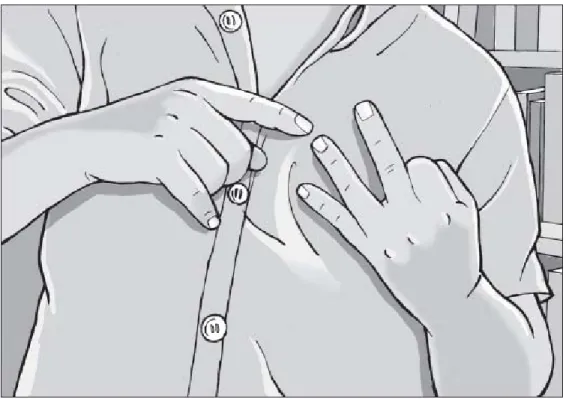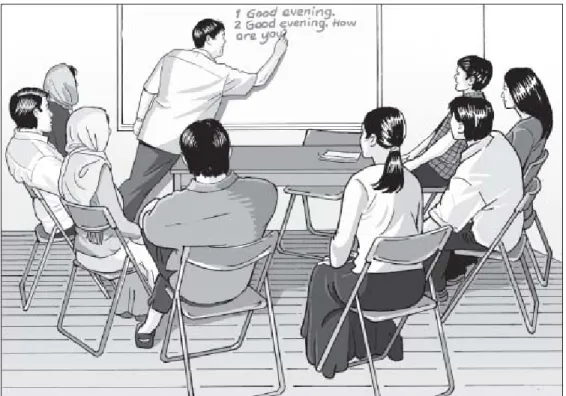12 The political dimensions of language teaching and the participatory approach 13 Learning strategy training, cooperative learning and multiple intelligences 14 New uses of technology in language teaching and learning. Rather than the elegant recognition of one rationality, language teaching is likely to involve the encounter and interaction of different rationalities.
A Study of Methods
4 Conversely, by being members of a professional discourse community, teachers can challenge their own beliefs about how teaching leads to learning. Interaction with others' views on practice helps keep teacher education alive and prevents it from becoming outdated and overly routine (Prabhu 1990).
Criticisms of Methods
Knowledge of methods is equated with a set of possibilities that enable teachers to respond meaningfully to specific classroom contexts. While criticism of methods is useful in some respects, we do not believe that the study of language teaching methods should be excluded from language teacher education.
New to this Third Edition
Terminology
2 We have used the term "target language" for "language being taught" for three reasons. Third, we avoided using the term "foreign" language because this label is relative to the speaker and variable in context.
Research in Language Teaching Methodologies: A Review of the Past and an Agenda for the Future' in K. Language Movements: The Place of 'Foreign' Languages in Classroom Teaching and Learning.' Review of Research in Education 32: 147–86 .
Introduction
Goals of this Book
Thought-in-Action Links
What if the students asked her questions she couldn't answer. When she examined her intentions more clearly, she saw that she was not yet ready to let her students take initiative in the lesson.
A Coherent Set
Which Method is Best?
For example, population flows between countries of the world have increased multilingualism (Todeva and Cenoz 2009). The use of the CEFR promotes the view that most learners are not complete tabulae rasae.
Doubting Game and Believing Game
So don't be quick to dismiss a principle or technique because at first glance it appears to be contrary to your own beliefs or impossible to apply in your own situation. If so, you can apply it in another way, for example by inviting a bilingual speaker to come to your class now and then or by having your students act out or paraphrase what they want to say in the language that they are studying.
Layout of Chapters
The answers to these questions will help our understanding of each method and allow us to see some important differences between the methods presented here. Another type of exercise asks you to make a connection between what you understand about the method and your teaching situation.
The Grammar-Translation Method
Experience
Students follow along in their books while the teacher reads a description of two-word (phrasal) verbs. However, there are some new two-word verbs in the passage that the students have not learned yet.
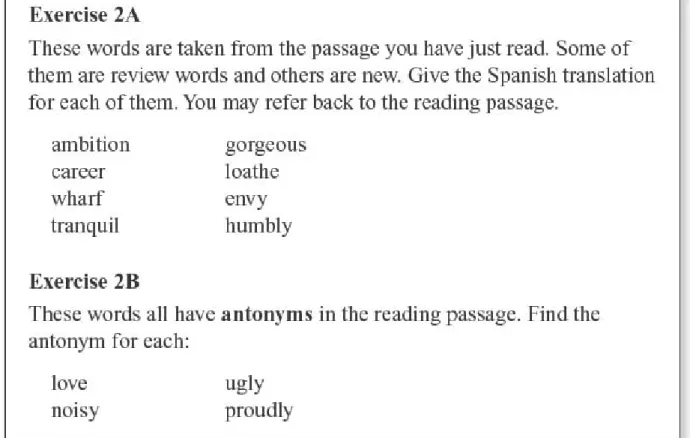
Thinking about the Experience
It is important for students to learn about the grammar or form of the target. There were other activities planned for the rest of the week, but in this book we will follow the practice of not listing an observation unless it leads us to discover another principle of the method.
Reviewing the Principles
1 What are the goals of teachers who use the Grammar-Translation Method?
2 What is the role of the teacher? What is the role of the students?
3 What are some characteristics of the teaching/learning process?
4 What is the nature of student–teacher interaction? What is the nature of student–student interaction?
5 How are the feelings of the students dealt with?
6 How is the language viewed? How is culture viewed?
7 What areas of language are emphasized? What language skills are emphasized?
8 What is the role of the students’ native language?
9 How is evaluation accomplished?
10 How does the teacher respond to student errors?
Reviewing the Techniques
Translation of a Literary Passage
Reading Comprehension Questions
Antonyms/Synonyms
Cognates
Students are also asked to memorize words that look like conjunctions but have meanings in the target language that are different from those in the native language.
Deductive Application of Rules
Fill-in-the-blanks Exercise
Memorization
Use Words in Sentences
Composition
Conclusion
Activities
A Check your understanding of the Grammar-Translation Method
B Apply what you have understood about the Grammar-Translation Method
1 The term target language is used to refer to either a second or a foreign language being taught. Since many students are already multilingual or multilingual, the term 'second language' does not make sense, nor does the term 'foreign language', because often the study of language takes place within a place where it is spoken, not in a certain 'foreign language'. 'country.
The Direct Method
The teacher points to the part of the map described by the sentence after everyone reads the sentence. Later, another student asks, “What is the ocean on the west coast?” The teacher interrupts him again before the class has a chance to answer, saying, “What is the ocean on the west coast.

1 What are the goals of teachers who use the Direct Method?
6 How is language viewed? How is culture viewed?
The following comprehensive overview of techniques will provide you with some details that will help you with this.
Reading Aloud
Question and Answer Exercise
Getting Students to Self-correct
Conversation Practice
Of course, even if you don't agree with all the answers, there may be some Direct Method techniques that you can adapt to your own approach to teaching.
Dictation
Map Drawing
Paragraph Writing
Now that you have considered the principles and techniques of the Direct Method, see what you can use for your own teaching situation. Do you agree that the aim of target language teaching should be to teach students how to communicate in the target language.
A Check your understanding of the Direct Method
B Apply what you have understood about the Direct Method
The Cleveland Plan for Teaching Modern Languages with Special Reference to French (revised ed.).
The Audio-Lingual Method
Now she gives them their first clue, 'pharmacy.' Together, the students answer: 'I'm going to the pharmacy.' The teacher smiles. The students are able to keep up the pace so the teacher moves on to the next step.
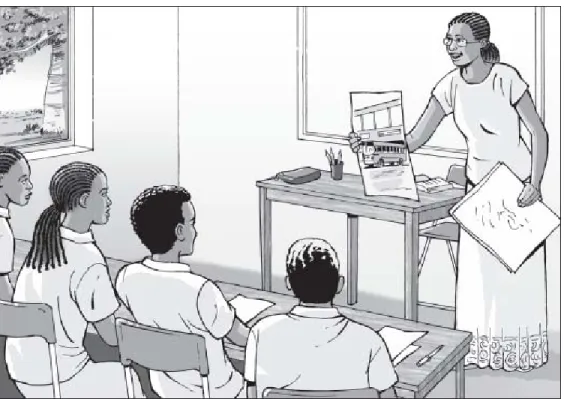
1 What are the goals of teachers who use the Audio-Lingual Method?
Students' native language habits are thought to interfere with students' efforts to master the target language. A contrastive analysis between the students' mother tongue and the target language will reveal where a teacher should expect more intervention.
Dialogue Memorization
If you agree with the answers above, you may want to use the following techniques. Of course, even if you don't agree, there may be techniques described below that you already use or can adapt to your own approach.
Backward Build-up (Expansion) Drill
Repetition Drill
Chain Drill
Single-slot Substitution Drill
Multiple-slot Substitution Drill
Transformation Drill
Question-and-answer Drill
Use of Minimal Pairs
Complete the Dialogue
Grammar Game
We have looked at both the techniques and principles of the Audio-Lingual Method. Which of these or the other principles of the Audio-Lingual Method are acceptable to you?
A Check your understanding of the Audio-Lingual Method
B Apply what you have understood about the Audio-Lingual Method
The Silent Way
The teacher shows the color blocks again, and this time all the students say,. When the students say nothing, the teacher points to the first color block and says /α/.
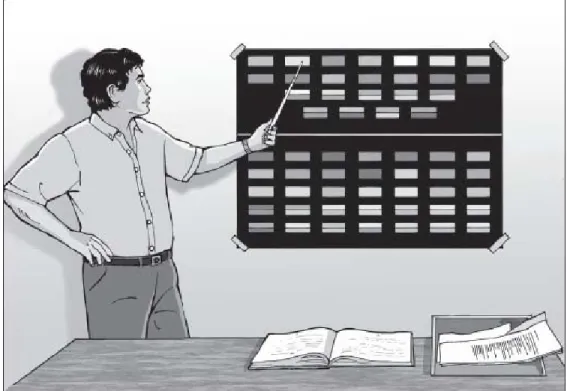
1 What are the goals of teachers who use the Silent Way?
The teacher asks the students to describe their reactions to the lesson or what they learned. When their emotions interfere, the teacher tries to find ways for the students to overcome them.
Sound–Color Chart
The materials reviewed in this chapter (cards and sticks) have been included in the review that follows. Although you may not have access to the actual materials discussed here, the materials may give you other ideas of what you can use.
Teacher’s Silence
Give yourself time to think about all these things before determining their value to you.
Peer Correction
Rods
Situations with bars can be created in such a way that the meaning becomes clear; then language is related to meaning. Later they can be used for more complicated structures; for example, prepositional statements ("The blue rod is between the green one and the yellow one") and conditional ("If you give me one blue rod, then I will give you two green ones").
Self-correction Gestures
Sometimes teachers put the sticks down on the desk in a line, using a different stick to represent each word in a sentence. He can also flesh out aspects of the structure for students, for example the need to invert the subject and the auxiliary verb to form questions.
Word Chart
They allow students to be creative and imaginative and allow action to accompany language.
Fidel Charts
For example, listed together and colored the same as the color block for the /ei/ sound are 'ay,'. Because of the large number of ways of writing sounds in English, there are a total of eight Fidel tables.
Structured Feedback
In this chapter we saw a beginner lesson and an intermediate lesson, but the Way of Silence is also used with advanced students. Proponents of the Silent Way claim that its principles are far-reaching, affecting not only education, but also the way one perceives life itself.
A Check your understanding of the Silent Way
B Apply what you have understood about the Silent Way
1 This upper-intermediate lesson is based on Donald Freeman's lesson in the State Department's Language Teaching Methods video.
Desuggestopedia
We live in Brazil, and we sell books.' The students laugh and clap as they sing along. Richard asks: 'What do you do?' The teacher corrects in a very soft voice and says 'What do you do?' The student answers: 'I am a conductor.'.
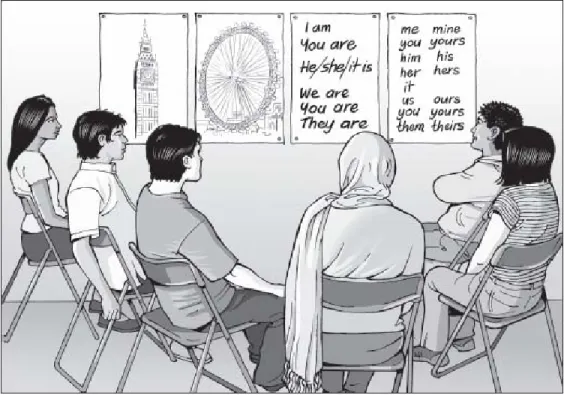
1 What are the goals of teachers who use Desuggestopedia?
Later, the students have more control over the target language and can respond more appropriately and even initiate interaction themselves. Claims about the success of the method often focus on the large number of words that can be obtained.
Classroom Set-up
Peripheral Learning
Positive Suggestion
Choose a New Identity
Role-play
In the lesson we observed, students were asked to pretend to be someone else and introduce themselves as that person.
First Concert
Second Concert
Primary Activation
Creative Adaptation
Do you think it makes sense that when your students are relaxed and comfortable, their learning will be facilitated.
A Check your understanding of Desuggestopedia
B Apply what you have understood about Desuggestopedia
It has been modified somewhat in light of comments by Alison Miller and Georgi Lozanov.
Community Language Learning
The teacher then tells the students to sit down and relax while he reads the transcript of the conversation in English. 13 The teacher asks the students to give the Indonesian equivalents while showing different phrases in the.
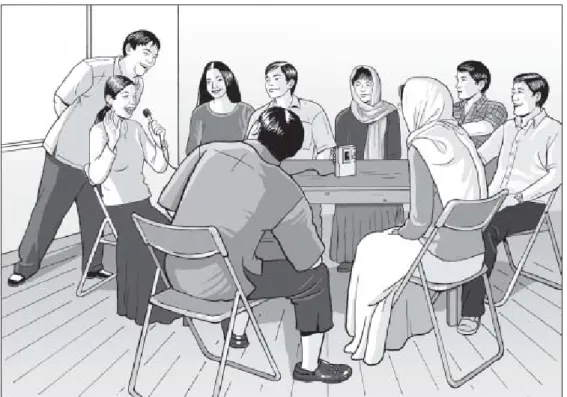
1 What are the goals of teachers who use the Community Language Learning Method?
To facilitate this, especially at the beginning of the learning process, the teacher helps to narrow the scope of attention. The first was when the students thought about the language while the teacher read the transcript three times.
Recording Student Conversation
Transcription
As students give their responses, the teacher understands them – it shows that he has listened attentively by providing an appropriate understanding response to what the student has said. You may want to return to the lesson we observed, where the teacher understood the students' responses to their conversation.
Reflective Listening
The teacher takes time between and/or after different activities to allow students to reflect on how they feel about the language learning experience, about themselves as learners, and about their relationship with each other. He does not repeat what the student says, but shows that he understands the point.
Human Computer™
Small Group Tasks
As indicated earlier in this chapter, the particular class that we observed represents the first lesson of what is considered a Stage I experience in the Community Language Learning Method. 1 'Learning is people', which means that learning a second language for all people takes place best in a relationship of trust, support and cooperation between teacher and students and between students.
A Check your understanding of the Community Language Learning Method
B Apply what you have understood about the Community Language Learning Method
1 In this chapter, the authors have benefited greatly from the careful reading and helpful comments of Jennybelle Rardin and Pat Tirone of the Counseling-Learning Institute.
Total Physical Response
Then the teacher turns to the rest of the class and gives these commands to the students sitting in the back row: 'Stand up. 1 The teacher gives a command in the target language and performs the action with the students.
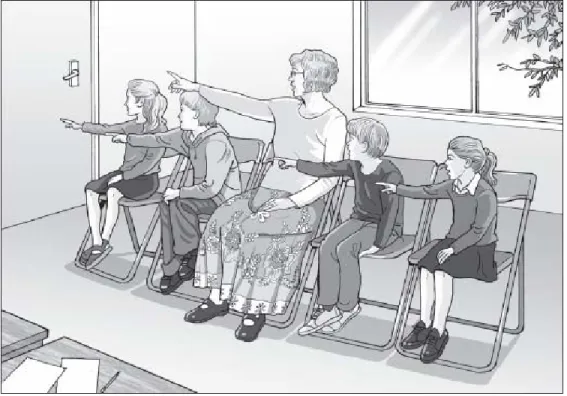
1 What are the goals of teachers who use TPR?
At some point, however, Asher believes that observers must demonstrate their understanding of the orders in order to keep them. One of the main ways this is accomplished is by allowing students to speak when they are ready.
Using Commands to Direct Behavior
Role Reversal
Action Sequence
Would you use the imperative mood to represent the grammatical structures and vocabulary of the target language? Would you like to adapt one of the TPR techniques to your teaching situation?
A Check your understanding of Total Physical Response
B Apply what you have understood about Total Physical Response
Communicative Language Teaching
You are more likely to say something like "I think the vacation policy may change" than "The vacation policy will change." What if, however, - continues the teacher, - it is your colleague with whom you disagree and you are sure that you are right.
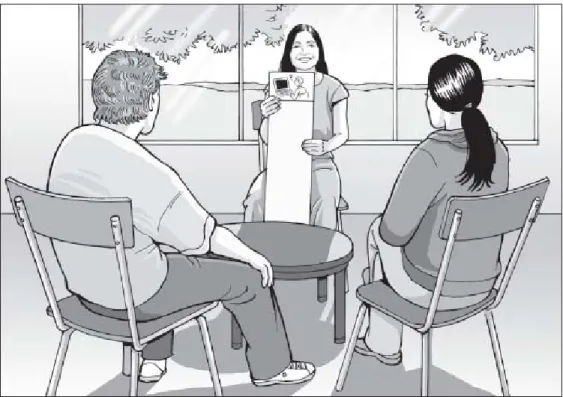
1 What are the goals of teachers who use Communicative Language Teaching (CLT)?
Sometimes he is the coordinator of the activities, but he does not always interact with the students himself. Another aspect of communicative competence is knowledge of the functions for which language is used.
Authentic Materials
Scrambled Sentences
Language Games
This overview is provided in case you want to try using any of the techniques or materials associated with CLT. These three properties were manifested in the card game, which we observed as follows: There was an information gap because the speaker did not know what her classmate would be doing next weekend.
Picture Strip Story
Games that are truly communicative have, according to Morrow (ibid. 1981), the three characteristics of communication: information gap, choice and feedback. Perhaps the greatest contribution of CLT is that teachers are asked to look carefully at what is involved in communication.
A Check your understanding of Communicative Language Teaching
B Apply what you have understood about Communicative Language Teaching
1 Of course, what is authentic and natural for native speakers of the target language is not so for students in the classroom. What is important is that these materials are used in a way that is real for students (Widdowson 1998).
Content-based Instruction
And others have suggested that task-based and participatory approaches are a form of content-based instruction. In any case, although it must be recognized that these methods are united by the assumption that students learn to communicate by communicating, their scope and their specific focus seem distinctive enough to warrant independent treatment, which we do, starting in this chapter with content-based instruction.
Rationale for Content-based Instruction
3 The teacher provides the missing language when students have difficulty explaining a concept in the target language. 4 Students call out their answers excitedly as the teacher writes them on the blackboard.
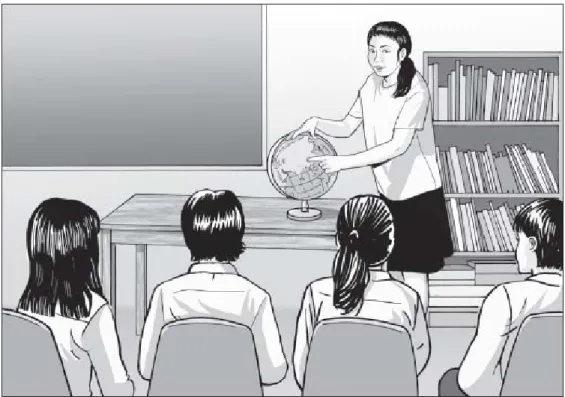
1 What are the goals of teachers who use CBI?
They understand the relevance of what they study and that language is a means to an end. Culture is treated in teaching to the extent that it is present in the content area being studied.
Teacher Preparation
Language includes not only vocabulary and grammatical structures, but also how these contribute to the discourse organization of texts. During language class, the language teacher is focused on helping students process the language in order to understand the academic content presented by the content teacher.
Whole Language
The language teacher also helps students complete academic tasks such as writing term papers, improving their note-taking skills and reading academic textbooks assigned by the content teacher. In content-based language teaching, the claim is, in a certain sense, that students get 'two for one' - both content knowledge and increased language skills' (Wesche 1993).
Dictogloss
Graphic Organizers
Language Experience Approach
Process Writing
In the writing process, on the other hand, students may first generate ideas about a topic and begin writing, but then they have repeated conferences with the teacher and other students during which they receive feedback on their writing until that point, make revisions. , based on the feedback they receive and continue to write. In this way, students learn to see their own writing as someone else's reading, and to improve both the expression of meaning and the form of their writing as they draft and redraft.
Dialogue Journals
Are there situations that would not be appropriate for the use of content instruction? Do you think that substantive education is more suitable for certain age groups than for others?
A Check your understanding of Content-based Instruction
B Apply what you have understood about Content-based Instruction
1 For simplicity, in the rest of this chapter we will use CBI to mean the integration of language and content in teaching. 3 This lesson is partly based on Cristelli (1994) 'An Integrated, Content-based Curriculum for Beginning Level English as a Second Language Learners of Middle School Age: Four Pilot Units', an independent professional project, School for International Training.
Task-based Language Teaching
Then he says: 'I think English is your favorite period, after lunch.' The students laugh. During the second period on these days you study mathematics.' The teacher continues until the schedules are ready.
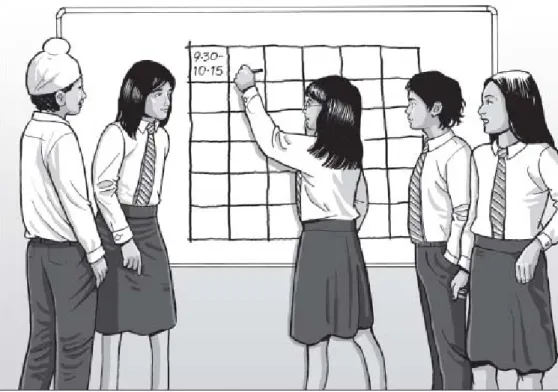
1 What are the goals of teachers who use TBLT?
